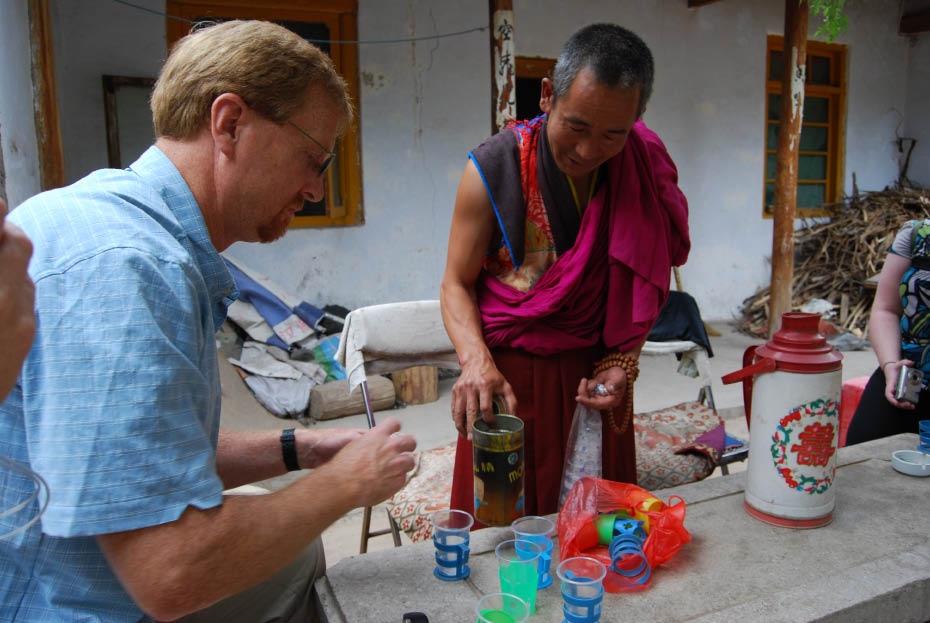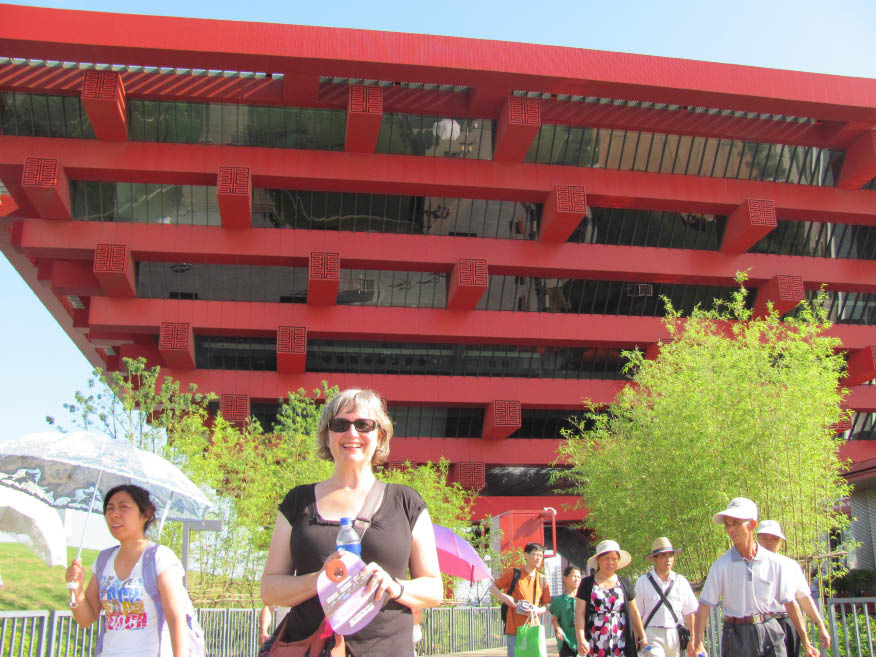|
It's People That Make Places
By KIM ROTT
ON July 9, 2010, I paused on the Great Wall of China on the outskirts of Beijing, trying to imagine all the people who had stood in that spot before, feeling the same breeze and viewing the same horizon. I imagined the laborers, soldiers, and sentries who built and manned the Great Wall hundreds or thousands of years ago. Today, tourists from every corner of the world, including myself and my husband (who had visited the same section of the Great Wall one year before), stand and take in the beauty of China.
How did a married couple from Missoula, Montana end up on China's Great Wall almost exactly one year apart? We are both educators who were lucky enough to join a China Study Tour sponsored by the National Consortium for Teaching about Asia (NCTA). I am a high school librarian, and David, my husband, is a 5th-grade-teacher who was recently promoted to principal.
During the summer of 2009, David spent nearly three weeks visiting Beijing, Xiahe County in Gannan Tibetan Autonomous Prefecture and Lanzhou City in Gansu Province, and Xi'an in Shaanxi Province. He was accompanied by 14 American teachers, two American professors who specialize in Chinese studies, and a host of knowledgeable Chinese tour guides. This past summer, I took a similar NCTA tour, visiting Beijing, several cities in Yunnan Province, and Shanghai.
 |
| David sharing tea. |
As long-time teachers, David and I know that our students sometimes see China through a single lens. "It's the place where the Olympics were." Or, "It's the place that makes all of our stuff." Our goal was to give our students multiple lenses through which to see China. So as we toured, we recorded our impressions, visited with Chinese citizens, noted similarities and differences between our two countries, and when we returned home, shared with each other all that we had seen and learned. Today, we are doing the same with our students.
We were both thrilled to see some of China's world-famous sites: the Great Wall, Tian'anmen Square and the Terracotta Soldiers. For Americans, whose historic sites are only a few hundred years old, clay soldiers fashioned 2,000 years ago are astounding. In fact, one of our lasting impressions of China is how old and new exist simultaneously. In Beijing, state-of-the art skyscrapers rise above hundred-year-old hutongs. In Kunming, brand-new cars rush past farmers on bicycles. And everywhere cherubic toddlers hold the hands of their wizened old grandparents.
Another lasting impression was the vitality of Chinese parks. Every park we visited was filled with activity and life. We witnessed ballroom dancing and Taiji. We watched sword and fan dance movements and lotus flowered lakes. And we experienced the openness of the Chinese people, who invited us to participate and were polite and patient teachers. In contrast, a typical Montana park is less boisterous. Here you would see only a few people, most alone, plugged into iPods, and jogging or walking a dog. Conventional wisdom holds that Chinese people value group cooperation more while Americans prize individuality, and this was evident in the parks.
We Americans pride ourselves on the diversity of our population, but David and I also saw a great deal of diversity in China as well. In Xiahe, David visited the Labrang Monastery. In Yunnan, my group learned about several ethnic minorities. In Dali, we visited the Bai people's traditional white homes adorned with delicate black and gray paintings, and we drank tea seasoned with goat cheese. In Lijiang, we saw traditional Naxi clothing and received blessings from a Naxi Holy Man. In Zhongdian, we bought Tibetan handicrafts and turned a giant prayer wheel. Visiting these cities reminded me of visiting American Indian reservations, where tourists can learn about the cultures of various native people.
My trip ended at the World Expo in Shanghai, where I was struck by how quickly China is changing. According to our tour guide, Shanghai has constructed 13 new subway lines in the last ten years. Like all of Shanghai, the Expo proved to be a marvel of size and design. From the green and white clad "cabbage kids"(Expo volunteers) who answered questions in every language, to the mist-cooled waiting lines, every detail had been planned to accommodate the huge crowds. The architecture was amazing, especially the China Pavilion. Inside, it featured a moving film about China's history and a gallery of children's images of the future – a fitting farewell for a country that is speeding toward its future.
 |
| Kim at the China Pavilion at the World Expo in Shanghai. |
Although all of our experiences were remarkable, David and I agree that our most memorable moments in China were encounters with individuals: a girl and her father in Shanghai who helped me find my hotel; a cab driver who sang songs to me as he drove through Zhongdian; the women who tried to teach me Taiji in a Beijing park; all the children who shouted "Hello!" David's experiences were similar. From Chinese teenagers who lent him their cell phones to locate missing tour mates, to racing a Chinese couple on bicycles on the city wall of Xi'an, to playing in a pick-up basketball game on a court in Lanzhou, he had ample opportunities to meet and visit with Chinese citizens.
Upon returning to the United States, David made a video about the Yellow River and the importance of water in Chinese history and culture to share with the students in his school. He chose this topic because it is similar to the same issues we face in Montana. This fall, I will help students research a particular Chinese province, create presentations, and hold a "China Fair" for other classes. I will also guide students to read books and write research papers about China in my library.
But even more important than creating formal lesson plans, David and I have collected a wealth of stories, photographs, and connections to share with our students. In doing so, the most important lesson we hope to impart was summed up by Zhang Yan, former first deputy editor-in-chief of China Today, when the American teachers visited his apartment in Beijing. He said that Chinese and Americans are far more alike than we are different. We all love our children. We all strive for health and happiness. And we all care about the future of the world.
KIM ROTT is an English teacher-turned-librarian at Sentinel High School in Missoula, Montana. |
